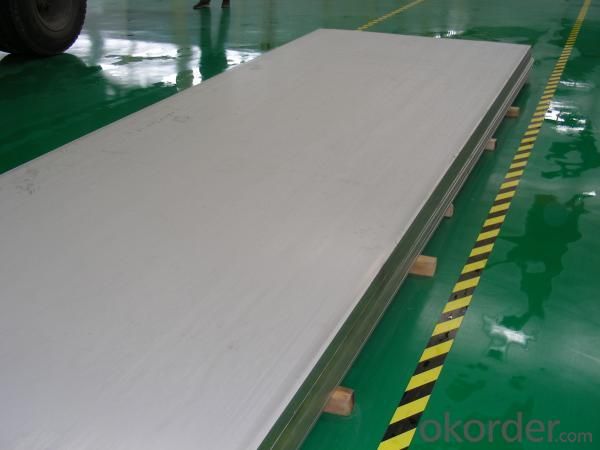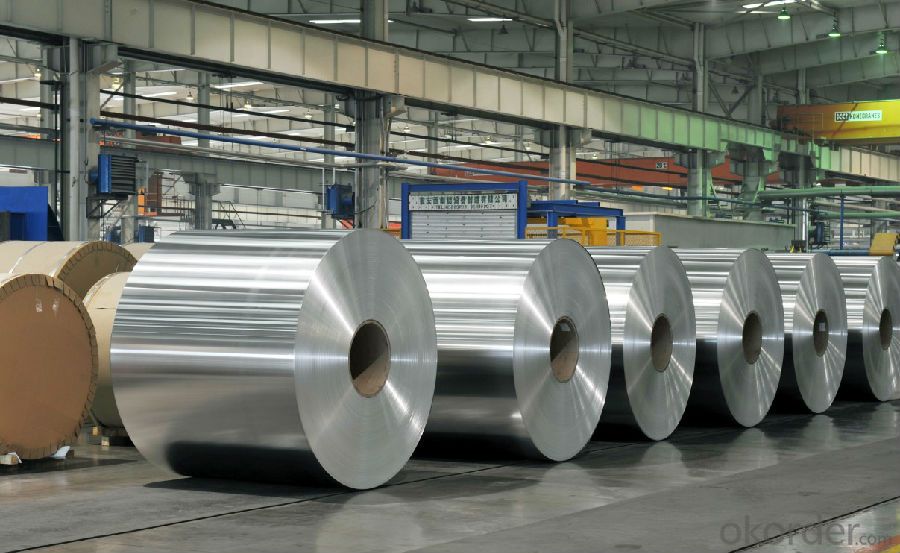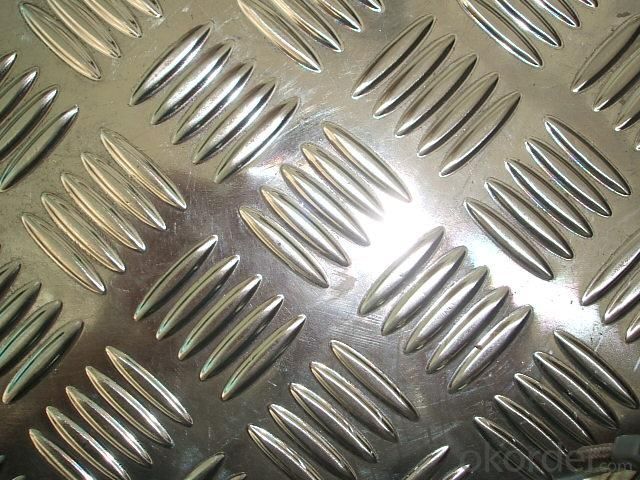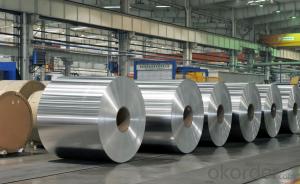Steel Rolled Coil SS400 Q345 Q195 Hot Rolled Steel Coil
- Loading Port:
- China main port
- Payment Terms:
- TT OR LC
- Min Order Qty:
- 20 m.t.
- Supply Capability:
- 1000 m.t./month
OKorder Service Pledge
OKorder Financial Service
You Might Also Like
Item specifice
Product Description:
General Information of Cold Rolled Steel Sheet
The raw material of cold rolled steel sheet is high quality hot rolled product, and after pickling, continuous rolling, degreasing, annealing, skin pass, slitting and cut to length line etc. Along with it many kinds of new technology and new process of global cold rolling production have been applied. Therefore the quality of the goods could be guaranteed. The finished product has a variety of excellent capabilities, such as processing capability and smooth, flat surface. It’s widely used in outdoor and interior decoration, furnishing manufacturing, home appliance, automobile etc.
Specifications of Cold Rolled Steel Sheet
1) Grade: SPCC, SPCD, SPCE, DC01-06, St12, Super deep drawing
2) Standard: JIS G3141-1996, EN 10131-2006, DIN EN 1002
3) Thickness: 0.20mm - 3.0mm
4) Width: 600/1000/1250/1500 (mm) or per customer's request
Package of Cold Rolled Steel Sheet
Strapped with min three strapping strips, covered by anti-water paper and plastic film, fixed on the iron or wooden pallets by strapping strips and covered by plastic bag to prevent damage from transportation.
Applications of Cold Rolled Steel Sheet
1) For the further producing of hot dip galvanized steel products
2) Cold rolled Steel: Auto manufacture, Oil drum, Transformer's tank panel, Furniture etc.





- Q:What is the cost of aluminum sheet compared to other metals?
- The price of aluminum sheet can differ from other metals depending on various factors like market conditions, availability, and specific metal grades. Generally, aluminum sheet is considered more economical than stainless steel, copper, and brass, among others. This is primarily because aluminum is abundant in the Earth's crust and the extraction and refining processes are relatively inexpensive. In addition, aluminum is often lighter in weight compared to other metals, making it a cost-effective choice for industries where weight is a concern, such as transportation. However, it should be noted that the cost of aluminum can change due to global supply and demand, tariffs, and other economic factors. Therefore, it is advisable to check current market prices and consult with suppliers or metal experts for accurate and up-to-date pricing information.
- Q:Can 101 aluminum sheets be used in the construction industry?
- Yes, 101 aluminum sheets can be used in the construction industry.
- Q:What is the thickness range available for aluminum sheets?
- The specific requirements and applications can cause the thickness range of aluminum sheets to vary. Typically, aluminum sheets come in a variety of thicknesses, ranging from very thin at 0.006 inches (0.15mm) to very thick at 0.5 inches (12.7mm) or even thicker in certain cases. It should be noted that the supplier or manufacturer may have different availability of specific thicknesses. Furthermore, specialized fabrication processes can often provide custom thicknesses.
- Q:What are the different surface finishes available for aluminum sheet?
- There are several different surface finishes available for aluminum sheet, each offering unique aesthetic and functional properties. Some of the common surface finishes for aluminum sheet include: 1. Mill Finish: This is the most basic and widely used surface finish for aluminum sheet. It has a smooth, raw appearance with visible grain lines from the manufacturing process. 2. Brushed Finish: This finish is achieved by brushing the aluminum sheet with a fine abrasive material, creating a pattern of fine lines. It provides a satin-like appearance and is often used for decorative purposes. 3. Anodized Finish: This finish is created through an electrochemical process called anodizing, which forms a durable oxide layer on the surface of the aluminum sheet. Anodized finishes are available in various colors and offer enhanced corrosion resistance. 4. Polished Finish: This finish involves polishing the aluminum sheet to a high gloss or mirror-like surface. It provides a reflective and elegant appearance, making it suitable for decorative applications. 5. Embossed Finish: This finish involves embossing patterns or textures onto the surface of the aluminum sheet. It adds texture and visual interest to the sheet, making it ideal for architectural and decorative purposes. 6. Powder Coated Finish: In this finish, a dry powder is applied to the surface of the aluminum sheet and then heated to form a protective and decorative coating. Powder coated finishes are available in a wide range of colors and offer excellent durability and resistance to weathering. These are just a few of the many surface finishes available for aluminum sheet. The choice of finish depends on the intended application, desired appearance, and specific performance requirements.
- Q:What are the different methods of surface preparation for aluminum sheet?
- The different methods of surface preparation for aluminum sheet include chemical cleaning, mechanical abrasion, and etching. Chemical cleaning involves the use of a cleaning solution to remove dirt, grease, and other contaminants from the surface. Mechanical abrasion uses techniques such as sanding or wire brushing to physically remove any loose or oxidized material. Etching is a process that involves applying an acidic solution to the surface to create a rough texture, which improves the adhesion of subsequent coatings or finishes.
- Q:Can aluminum sheets be used for flooring?
- Indeed, flooring can utilize aluminum sheets. Lightweight and sturdy, aluminum proves resistant to corrosion, rendering it an appropriate option for a range of flooring uses. Notably, aluminum sheets frequently find employment in industrial, commercial, and residential settings, encompassing warehouses, garages, kitchens, and outdoor areas. These sheets offer commendable strength, effortless installation, and minimal upkeep. Furthermore, aluminum flooring imparts a polished and contemporary aesthetic to any given space. Nevertheless, prudent consideration of factors like thickness, finish, and the unique demands of the flooring project becomes imperative prior to settling on aluminum sheets.
- Q:I saw a nice looking set of cast aluminum pots for a very good price. They feel very heavy. But I remember hearing that aluminum is not healthy so I am wary of buying them. Any advice would be appreciated.
- A lot of aluminum pots these days have a teflon coating. If the pot is plastic-coated, then you won't get any aluminum from it Twenty years ago, there were concerns about aluminum pots because of the aluminum content of alzheimer clumps. But aluminum intake was cleared from worries about alzheimer -- the clumps gather aluminum rather than vice versa. I'm not aware of any more recent health concerns. The first link below claims that the anodizing process that hardens the surface of the pot, also locks in the metal so that none gets into the food. In the second link, Planet Grean (part of Discovery Channel) says that you're allowed 50 milligrams per day, and even using non-anodized aluminum cookware would give you five or six. But they say not to cook acidic foods, store food in the pot, or keep using the pot after a major scratch in the hardened surface. In the third link, Treehugger (also part of the Discovery empire) says that you get more aluminum from your drinking water than from aluminum cookware. (Alum is used to settle sediment in big-city water supplies.)
- Q:Can aluminum sheets be used for cladding?
- Indeed, cladding can certainly make use of aluminum sheets. The utilization of aluminum as a cladding material is widespread owing to its plethora of advantageous attributes. Its lightweight nature, durability, resistance to corrosion, exceptional thermal and acoustic insulation properties all contribute to its popularity. Furthermore, aluminum is highly malleable, granting designers a wide array of possibilities. The application of aluminum cladding is prevalent in both residential and commercial constructions, serving to provide protection, enhance aesthetic appeal, and boost energy efficiency.
- Q:Can 101 aluminum sheets be used in HVAC systems?
- Yes, 101 aluminum sheets can be used in HVAC systems. Aluminum is commonly used in HVAC systems due to its excellent thermal conductivity, corrosion resistance, and lightweight properties. The 101 aluminum alloy is a commonly used grade that provides good strength and ductility, making it suitable for HVAC applications. It is often used for fabricating ducts, air handlers, heat exchangers, and other components in HVAC systems. Additionally, aluminum sheets are easy to work with and can be easily formed and shaped according to the specific requirements of the HVAC system.
- Q:how many protons,nuetrons, and electrons are in aluminum?
- Aluminum is element 13, so it has 13 protons. This also means that it normally has 13 electrons (provided it is not in an ionic state). Normally it has 14 neutrons, but may have less or more in various isotopes.
1. Manufacturer Overview |
|
|---|---|
| Location | |
| Year Established | |
| Annual Output Value | |
| Main Markets | |
| Company Certifications | |
2. Manufacturer Certificates |
|
|---|---|
| a) Certification Name | |
| Range | |
| Reference | |
| Validity Period | |
3. Manufacturer Capability |
|
|---|---|
| a)Trade Capacity | |
| Nearest Port | |
| Export Percentage | |
| No.of Employees in Trade Department | |
| Language Spoken: | |
| b)Factory Information | |
| Factory Size: | |
| No. of Production Lines | |
| Contract Manufacturing | |
| Product Price Range | |
Send your message to us
Steel Rolled Coil SS400 Q345 Q195 Hot Rolled Steel Coil
- Loading Port:
- China main port
- Payment Terms:
- TT OR LC
- Min Order Qty:
- 20 m.t.
- Supply Capability:
- 1000 m.t./month
OKorder Service Pledge
OKorder Financial Service
Similar products
New products
Hot products
Hot Searches
Related keywords




























